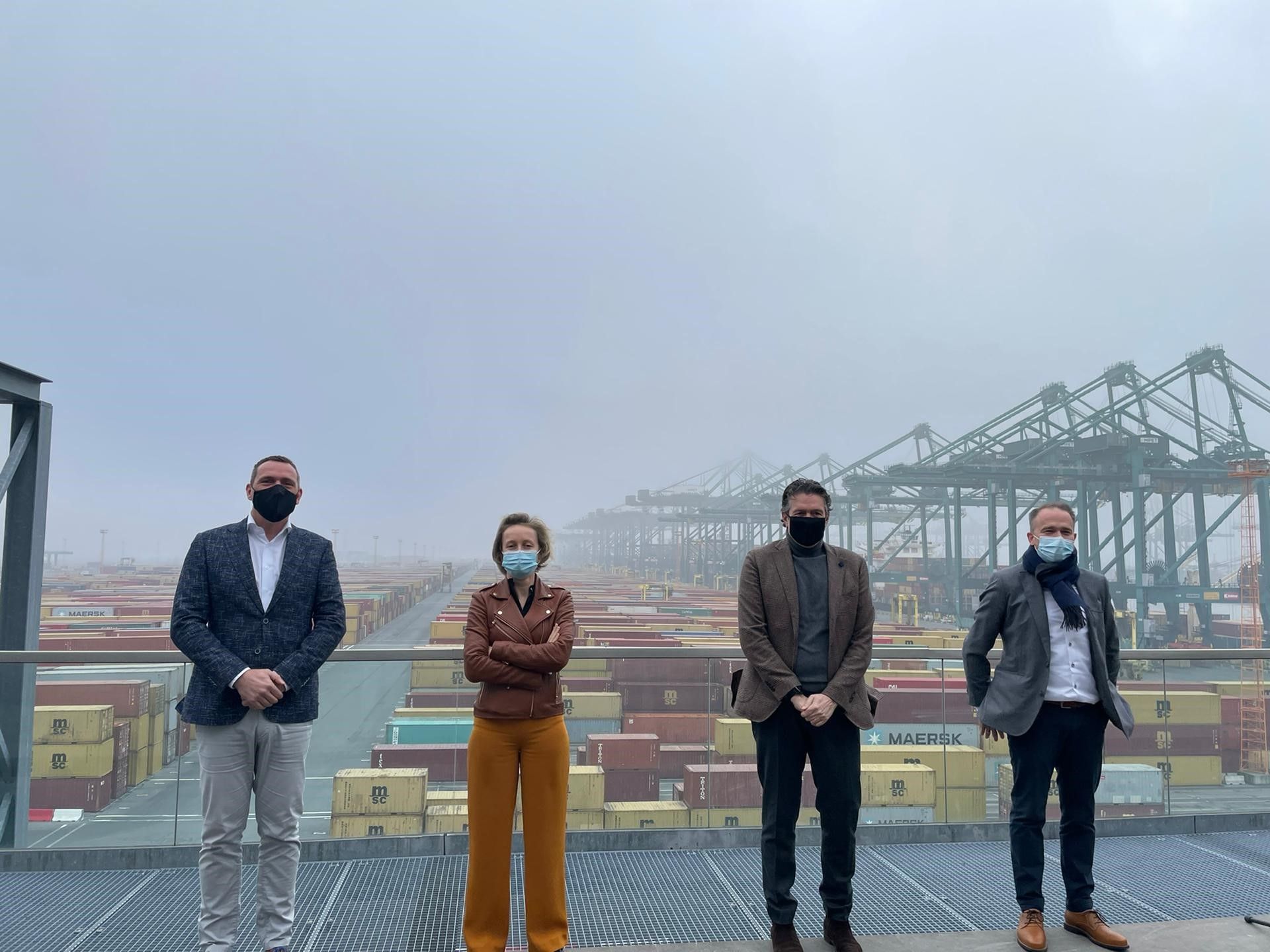Port of Antwerp: Draught record broken at Deurganck Dock
First trial for increasing draught on the Western Scheldt river successful
The first trial run as part of a potential extension of the maximum draught of the Western Scheldt river has been carried out successfully. On Sunday, the MSC REGULUS entered the port of Antwerp with a draught of 15.7 metres, a new record! It is the first in a series of trial runs where the draught will be increased to 16 metres. This draught is necessary to be able to continue receiving the very largest container ships in the future. The pilot project is a collaboration between Port of Antwerp, the Flemish and Dutch Pilotage, the Common Nautical Management and the shipping company MSC.
First test passed
The current maximum draught of the Western Scheldt river for container ships sailing to Antwerp is 15,5 metres. In order to allow the largest seagoing vessels to use Antwerp as their first port of call in the future, however, a draught of 16 metres is required at the inlet. It was therefore decided to carry out a series of trial runs during which the maximum draught was systematically increased to 16 metres. This increase in the permitted draught considerably increases the loading capacity of the ships.These extra 5 decimetres can yield a +/- 1000 TEU gain.
During the pilot project, the maximum permissible draught at inlet will gradually be increased from the current 15,5 metres to 15.7 metres, via 15.9 metres and finally 16 metres. The pilot project is a collaboration by Port of Antwerp, the Flemish pilots from the Flemish Agency for Maritime Services and Coast (MDK), the Dutch pilots, the Common Nautical Management (GNA), traffic controllers and the shipping company MSC. The deepening applies only to container ships sailing to the Deurganck Dock. On Sunday, the first trial run was successfully carried out when the MSC REGULUS, with a draught of 15.7 metres, entered the port of Antwerp from Rotterdam, breaking the draught record at the Deurganck Dock.
Six trial runs
The inlet for deep-sea vessels is determined by the tide. During the higher water level, there is a ‘time window’ during which deeper vessels can embark or disembark. Calculation of the time windows and simulations have shown that shipping with a draught of 16 metres is effectively possible on the Western Scheldt river.
In order to guarantee smooth and safe navigation on the Scheldt and its approaches to the sea, Flanders and the Netherlands are collaborating within the Common Nautical Management (GNA).
The decision for the pilot project was made in close consultation with the GNA and the three progressively deeper draughts will therefore be tested by both Flemish and Dutch pilots. After each draught test, there will be a detailed assessmentand a discussion of the findings. A final evaluation will then follow after the six trial runs and a final decision will be taken for the passage of ships with a draught of 16 metres.

Rob Smeets, Chief Operations Officer Port of Antwerp: "We are extremely enthusiastic about this successful trial run and the new draught record. For our global economic position, the vital supply of our country and the prosperity of present and future generations, it is essential that we can receive the very largest seagoing vessels and that they can choose Antwerp as their first port of call. I would like to take this opportunity to thank the various partners who have made this project possible."
Annick De Ridder, Port Alderman: “For our worldwide economic position, supplying this country and Europe which is so important, and the prosperity of current and future generations, it's essential that we can continue to receive the largest container ships and that they can choose Antwerp as their first port of call. We are therefore particularly enthusiastic about the start-up of this project and the successful first trial run. If ships with a bigger draught can call at the port of Antwerp, the port can raise its profile even more in the Far East, where the biggest ships sail, and strengthen its position as a first port of call here too. This will help to strengthen our competitive advantage over other ports and perpetuate our position as a world port.”
Nathalie Balcaen, Administrator-General of the Agency for Maritime Services and Coast: “The gradual increase of shipping to a maximum draught of 16 metres means a significant optimisation of cargo capacity. Years of experience, nautical expertise and strong collaboration across national borders are making these trial runs possible and increasing economic prosperity in Flanders. The nautical chain is becoming more and more robust and is – successfully – pushing the boundaries of what is safely achievable.”
Marc Beerlandt, CEO of MSC Belgium: “MSC is very excited about this project, which is ultimately set to increase the maximum inbound draught to Antwerp by almost half a metre, providing the opportunity to step up transit times and bring additional cargo to Antwerp.”
Harold Kunst, CEO MPET: "We are excited that MSC, POA, GNA & the Flemish and Dutch Pilotage have successfully completed the first trial run, strengthening the position of the Port of Antwerp. We look forward to the further course of this project."



